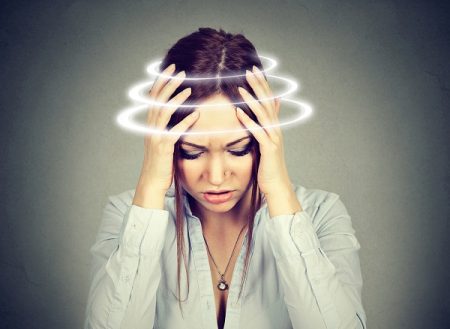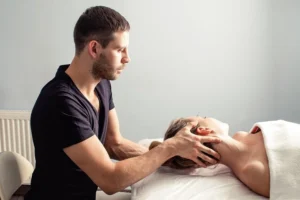Is It a Normal Headache or Migraine: How to Recognize the Difference?
- Updated on: Jul 11, 2024
- 6 min Read
- Published on Sep 19, 2022

Headache is very common and is an extremely uncomfortable experience. People experience pain in their head or neck region when they have headache. Migraine involves severe pain in head along with nausea and vomiting. It is much more critical than a headache. At times, it becomes difficult to identify whether a person suffers from headache or migraine. Let us find out some major differences and similarities among them.
Different types of headache
Headache is classified into different types which are as follows:
Tension headache
Tension headaches are the most common types of headache. They are also known as tension type-headache. They cause headache in back of head and on the right side.
Migraine headache
Migraine headache, also commonly known as migraine pain, is also a common type of headache. Their occurrence is less common than a tension headache. It is more common in women than men. The degree of pain is quite different from a pain that usually occurs during a tension headache, which indeed helps in differentiating between the two. A migraine pain can also occur as a headache in back of head and on the right side.
Cluster headache
Cluster headache is least experienced by individuals. It mainly occurs due to high consumption of certain medicines. These types of pains usually occur when a person lies down. They are more common in males than in females or children.
Sinus headache
Sinus headache is caused by sinus infection or allergic rhinitis. Its symptoms are quite similar to the symptoms of migraine headache.
This infographic was created by One Wellness Utah, a provider of acousana therapy
What are the major differences between a headache and a migraine? What helps us differentiate between the two?
There are certain specific differences between a migraine and a normal headache based on the degree of pain and certain symptoms experienced by an individual. They are different in what triggers them and the risk factors which lead to their onset. There is also a difference in the location and duration of pain experienced by an individual due to migraine vs headache.
Migraine is also associated with aura. If the signs of aura are identified, it is easy to differentiate between a headache and a migraine. These factors help a doctor recognize whether a person suffers from a headache or a migraine.
More: Migraine: Symptoms, Causes, Diagnosis, Prevention, Treatment
More: Living With Chronic Migraine
Tension Headache VS Migraine: How does one feel in a headache and a tension migraine?
During a tension headache, an uncomfortable-type pain and pressure is experienced in the head. During a migraine, the pain is much more severe and people report it as pounding, pulsating and throbbing type.
Do headache and migraine share some similarities?
In both these situations, the patient experiences pain in their head which can range from mild to moderate to extremely severe in certain cases.
Location of pain: Where does the pain occur in the body during a Tension Headache VS migraine?
A tension headache usually causes pain across your forehead or at the base of the neck or throughout the head. Whereas migraine is usually associated with pain on only one side of the head or pain behind your eyes or near your eyes.
Is headache in back of head a tension headache?
Headache which occur at the back of your head is mainly caused due to arthritis, poor posture, herniated disk and occipital neuralgia (damage of spinal cord nerves), whereas tension headache is caused by stress or muscle tension. Headache in back of head leads to pain in other sites of the head also such as the right and left side of the head.
The pain at the back of the head can be treated on the basis of its specific reason of onset, such as arthritis pain is treated by anti-inflammatory drugs and herniated disk pain is treated by physical therapy or surgery. Tension headache can be cured by home remedies or over-the-counter medicine or by managing your stress levels.
Cluster headache vs migraine and tension headache: How is cluster headache different from tension headache?
Cluster headache is quite different from a tension headache.
- Cluster headache pain occurs behind the head, above the eyes and along the temples in a cyclic manner whereas tension headache occur throughout the head and forehead.
- Cluster headaches are quite severe and people experience a drilling sensation due to pain, whereas during a tension headache, a typical type of pressure or a mild pain occurs in the head.
- Cluster headaches usually last for about 15 minutes to 3 hours and would relapse about eight times daily, whereas tension headache would occur about less than 24 hours continuously.
- The most common symptoms of cluster headache are watering of eyes, conjunctiva would become red, nasal stiffness, eyelids drooping, sweating from one side of the face and change of pupil size. The symptoms of tension headache include pain and stiffness of muscles of head, neck and shoulder.
- In the beginning, migraine and cluster headaches may feel differently. People with migraines may experience nausea, sensitivity to light, and vomiting, whereas those with a cluster headache generally feel pain on one side of the head, experience watery eyes and runny noses.
Signs and symptoms experienced during a tension headache and migraine
Tension headache may occur gradually or suddenly. Symptoms of tension headache include soreness of muscles of head, neck and shoulders.
During migraine, along with pain in the head, nausea and vomiting would also occur. An individual may be sensitive to light, certain sounds, and smell. The symptoms of migraine might increase due to slight physical movements, whereas no such signs appear in an individual suffering from a tension headache.
Causes of tension headache vs causes of migraine
The cause of tension headache can be any kind of muscle tension that occurs in the body, whereas migraine usually occurs due to changes in the blood flow in different areas of the brain or due to alteration (swelling and irritation) in the blood vessels, which leads to inflammation and accumulation of pain stimulatory molecules in these areas.
Migraine also has a genetic connection due to which it runs in families.
More: Visual Migraine Treatment: How To Get Rid Of An Ocular Migraine (Retinal Migraine)?
Triggers responsible for the onset of tension Headache VS migraine
Tension headache mainly occurs due to stress, fatigue, insufficient sleep, any kind of rigidness in the muscles of the neck or scalp, dehydration and hangover.
Migraine can be triggered by a large number of factors such as:
- lack of sleep
- changing in pattern of sleep
- certain types of smells
- bright light
- weather changes
- hormonal changes
- certain foods such as red wine, peanut butter, dairy products and citrus fruits
- skipping the meals
Diagnosis of tension headache and migraine
These conditions can be diagnosed mainly on the basis of the duration of the headache. Migraine usually lasts for few hours to 3 days, whereas tension headache may occur from about 30 minutes to about a week.
One should maintain a complete record of the headache to recognize whether it is a tension headache or a migraine. This record should include information about the duration of your headache, when does the headache start, degree of pain, certain specific symptoms that you experience, any medication that you had consumed during a headache and certain triggers which lead to the onset of pain such as hormonal changes in women, alcohol consumption or some edible compounds.
Can headache and migraine be cured?
The pain caused by either tension headache or migraine could be easily treated at home by analgesics (pain killers) such as ibuprofen, aspirin and naproxen. One should be careful with the consumption of these drugs as it may lead to a condition known as medication overuse headache, a situation in which the headache would occur on a daily basis.
If the pain continues for a longer period such as for about 15 days each month, then you should immediately consult a doctor experienced in treating headaches. In such a situation, he/she would recommend any antidepressants, anti-seizure drugs or certain muscle relaxants.
Treatment of headache vs Migraine
The treatment of pain due to migraine can be cured by certain medications which could work against the inflammation due to changes in the blood vessels in the brain. These include:
- Triptans such as eletriptan, zolmitriptan and rizatriptan which are commonly prescribed by doctors.
- Sometimes, the doctor may also prescribe certain antidepressants, high blood pressure drugs, anti-seizure medicines and natural supplements.
- In severe cases, a doctor might recommend Botox which is a botulinum toxin, which can decrease the severity of migraine. This is a specific treatment for migraine headache only.
- In some cases, certain foods may decrease the frequency of migraine or trigger them for a specific individual. These foods should be identified and their consumption should be monitored carefully.
Pain due to tension headache can be treated by simple remedies at home, such as:
- some amount of sleep
- caffeine
- relax your mind and body with simple breathing exercises
- place a hot or cold water bottle at the site of pain
- gently massage your muscles of head, neck and shoulder
- you can try acupressure technique
- If the pain is uncontrollable, certain analgesics such as Acetaminophen, aspirin and ibuprofen can be consumed.
There are certain specific medications which may be effective against both headache and migraine. These medicines are referred to as over–the–counter medicines for headache or migraine. Few examples of such over the counter medicines are acetaminophen, non-steroidal anti-inflammatory drugs (NSAIDs) ibuprofen and naproxen.
What is more worse – a headache or a migraine?
A migraine is worse than a tension headache because the symptoms are more severe and makes an individual extremely uncomfortable. Pain experienced during a headache or migraine is one of the major factors which differentiates them.
Pain can be quite unbearable at times. During a tension headache, people experience a typical type of pressure to tightness in the head but during a migraine, the pain experienced is pounding, pulsating and throbbing type.












